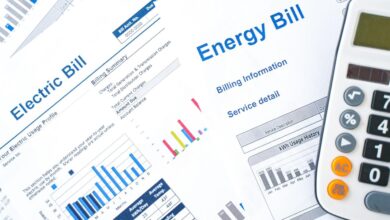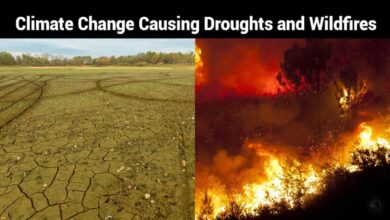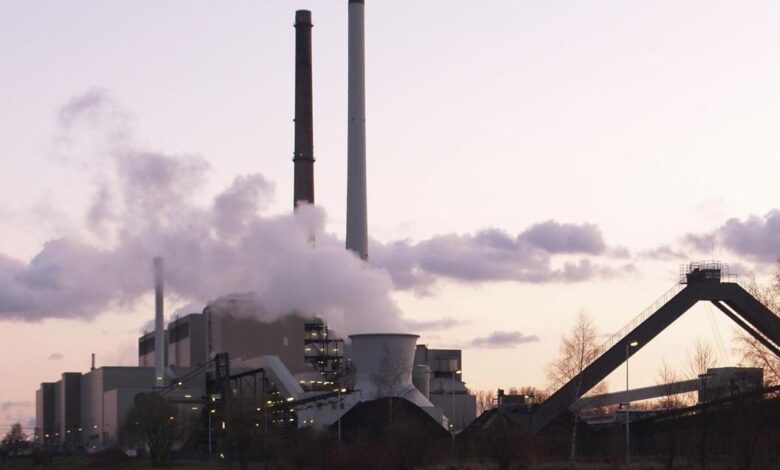
EPA Climate Power Plant Emissions A Deep Dive
EPA climate power plant emissions are a crucial aspect of global environmental concerns. This detailed exploration examines the regulations, impacts, and strategies for reducing emissions from power plants, highlighting the scientific, economic, and social dimensions of this critical issue.
The EPA’s role in setting and enforcing regulations, coupled with the profound effects of power plant emissions on climate change, are central to this discussion. We’ll delve into the specifics of different emission sources and the various approaches being taken to address this challenge.
EPA Regulations on Power Plant Emissions
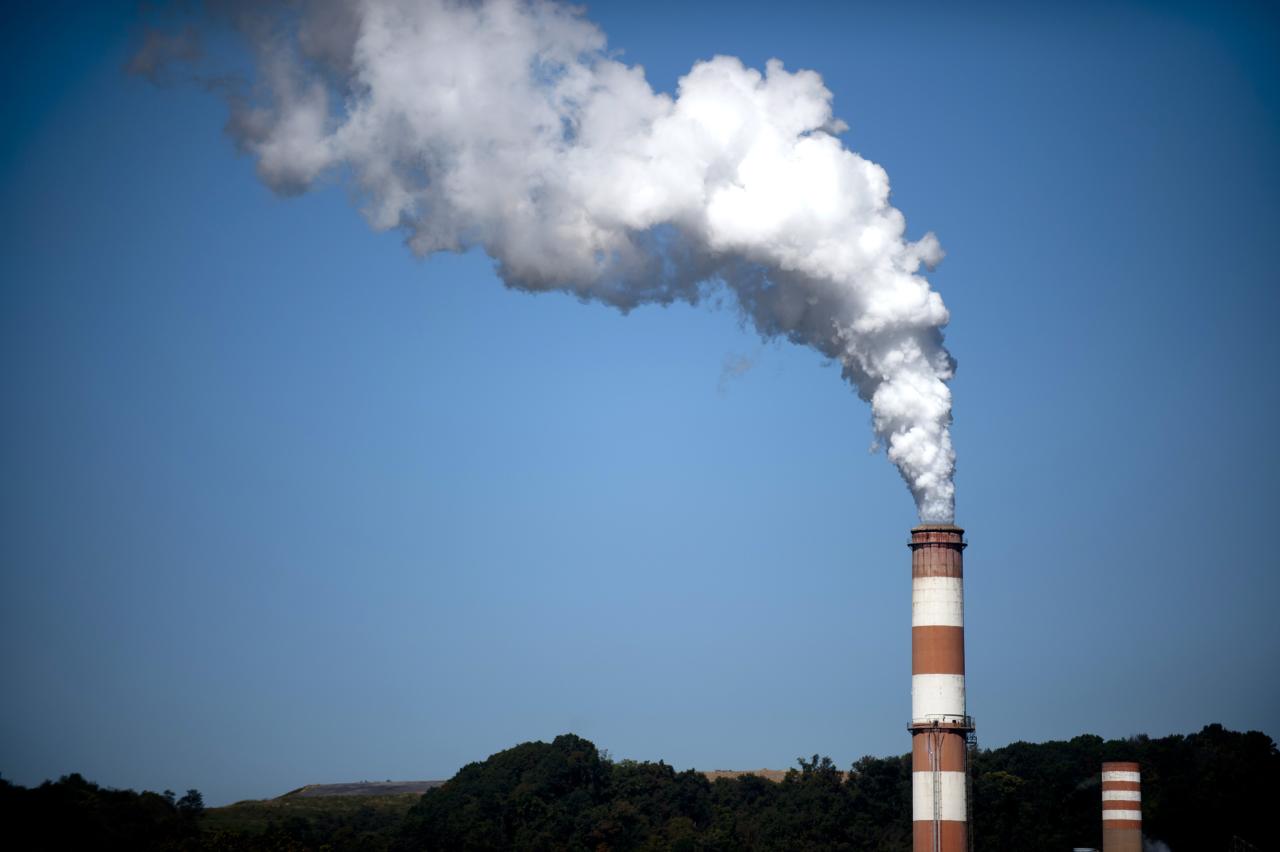
The Environmental Protection Agency (EPA) plays a crucial role in safeguarding air quality by regulating emissions from power plants. This vital role has evolved significantly over time, driven by growing concerns about the impact of industrial emissions on public health and the environment. This evolution is reflected in the increasing stringency and scope of EPA regulations.The EPA’s regulatory framework aims to reduce harmful pollutants released into the atmosphere from power plants, impacting not only air quality but also public health and the environment.
By setting emission limits and implementing compliance measures, the EPA seeks to mitigate the negative consequences of power plant operations.
Historical Development of EPA Regulations
The EPA’s authority to regulate power plant emissions stems from various pieces of legislation. The Clean Air Act, amended over the years, provides the legal framework for setting national ambient air quality standards and controlling emissions from stationary sources, including power plants. Early regulations focused primarily on controlling specific pollutants like sulfur dioxide and particulate matter. Subsequent amendments and regulations have progressively tightened emission limits, reflecting scientific understanding of the impacts of pollutants and societal concerns.
Key Pollutants Regulated and Emission Limits
The EPA regulates a range of pollutants emitted from power plants. These pollutants can have significant health and environmental consequences. The specific pollutants and their associated emission limits vary based on factors like the type of power plant and the specific technologies used for emission control.
Categories of Power Plants and Emission Regulations
Power plants vary significantly in their fuel sources and technologies. These differences influence the types and quantities of pollutants released into the atmosphere. The EPA’s regulations address these variations by tailoring emission limits to specific categories of power plants.
| Pollutant | Limit (Example) | Applicable Plant Type |
|---|---|---|
| Sulfur Dioxide (SO2) | Specific limits based on the type of combustion technology, and the plant’s capacity. | Coal-fired, natural gas, and oil-fired plants |
| Nitrogen Oxides (NOx) | Specific limits based on the type of combustion technology, and the plant’s capacity. | Coal-fired, natural gas, and oil-fired plants |
| Particulate Matter (PM) | Specific limits based on the type of combustion technology, and the plant’s capacity. | Coal-fired, natural gas, and oil-fired plants |
| Mercury | Specific limits based on the type of combustion technology, and the plant’s capacity. | Coal-fired plants (and others) |
| Carbon Dioxide (CO2) | Emission limits, often not directly set, but included in policies aiming to reduce greenhouse gas emissions. | All types of power plants |
The table above illustrates the complex regulatory landscape for power plants. It demonstrates the significant role the EPA plays in protecting air quality and public health. Specific emission limits are based on factors like the type of fuel used, the age of the plant, and the capacity of the power plant. This approach ensures that the regulations are effective in reducing emissions while taking into account the specific circumstances of each power plant.
Impact of Emissions on Climate Change
Power plants, the backbone of modern society, play a crucial role in providing electricity. However, their operation, particularly in the absence of effective emission controls, contributes significantly to climate change. Understanding the connection between power plant emissions and climate change is vital for developing sustainable energy strategies and mitigating its effects. This discussion delves into the scientific basis of this connection, highlighting the diverse emissions from various plant types and their environmental consequences.The scientific consensus overwhelmingly supports the link between human activities, including power plant emissions, and rising global temperatures.
EPA’s climate regulations on power plant emissions are definitely a hot topic right now. While I’m pondering the impact of these regulations, I can’t help but think of the amazing music in Broadway cast albums, like the ones from Sweeney Todd. Exploring the haunting melodies and powerful performances on broadway cast albums sweeney todd is a great way to unwind.
It’s a fascinating parallel, really, the dramatic storytelling of Sweeney Todd and the dramatic impact of the EPA’s work to combat climate change. Regardless, the need to find solutions for cleaner power plant emissions is still critical.
Greenhouse gases released during electricity generation trap heat in the atmosphere, leading to a gradual warming trend. This phenomenon, known as the greenhouse effect, is a natural process; however, human activities have intensified it, accelerating the rate of global warming and causing a cascade of environmental consequences.
Greenhouse Gas Emissions from Different Power Plants
Power plants fueled by fossil fuels, such as coal, natural gas, and oil, release significant amounts of greenhouse gases. Different fuels emit various amounts of different gases, each with a varying global warming potential. Coal-fired plants, for example, are known to release substantial amounts of carbon dioxide (CO2), a potent greenhouse gas. Natural gas plants, while emitting less CO2 compared to coal, still contribute to the overall greenhouse gas burden.
EPA’s climate power plant emission regulations are definitely a hot topic right now. But the ripple effects extend beyond the factory smokestacks. The tightening of these rules, in turn, can potentially impact the housing market near NYC, as developers and investors assess the long-term viability of new projects. This could lead to shifting costs and investment strategies in the region, influencing the overall market.
Ultimately, these EPA climate initiatives will likely continue to play a major role in shaping the future of energy production and the real estate market. housing market near nyc
- Coal-fired power plants release substantial amounts of CO2, along with other greenhouse gases like methane (CH4) and nitrous oxide (N2O), which have significantly higher global warming potentials compared to CO2. The combustion process in coal plants releases a mix of pollutants, including particulate matter and sulfur dioxide, which have detrimental impacts on human health and ecosystems.
- Natural gas power plants, while emitting less CO2 than coal plants, still contribute to greenhouse gas emissions. The main greenhouse gas released is CO2, along with smaller amounts of methane (CH4). While natural gas is considered a cleaner fossil fuel, its production and transportation processes can still lead to methane leaks, reducing its overall environmental benefits.
- Renewable energy sources, such as hydroelectric, solar, and wind power, generate electricity with minimal or no greenhouse gas emissions. These plants do not directly contribute to atmospheric greenhouse gases, making them a crucial component of a sustainable energy future. While the environmental impacts of renewable energy sources are relatively low, it’s important to consider the entire lifecycle assessment, including the manufacturing and disposal of components, to achieve a holistic understanding of their impact.
Global Warming Potential of Greenhouse Gases
The global warming potential (GWP) quantifies the capacity of a greenhouse gas to trap heat in the atmosphere over a specific time frame, typically 100 years. Different gases have different GWPs, reflecting their varying radiative efficiencies and atmospheric lifetimes.
EPA climate power plant emissions are a serious concern, impacting our planet’s future. However, recent tragedies like the unfortunate incident involving the armorer Alec Baldwin on the set of Rust, armorer alec baldwin rust shooting , highlight the importance of safety protocols in all industries, reminding us that tragedies can occur anywhere. Ultimately, the focus must return to the critical issue of responsible emissions control from power plants to ensure a sustainable future.
| Greenhouse Gas | Chemical Formula | Global Warming Potential (GWP) (100-year timescale) |
|---|---|---|
| Carbon Dioxide | CO2 | 1 |
| Methane | CH4 | 25 |
| Nitrous Oxide | N2O | 298 |
A higher GWP indicates a greater potential for a gas to contribute to global warming.
Effects on Climate System
Greenhouse gas emissions from power plants contribute to a variety of climate change effects. These effects manifest in different ways across various regions, impacting ecosystems, economies, and human health.
- Global Temperature Rise: Increased greenhouse gas concentrations lead to a gradual warming of the planet, causing shifts in weather patterns, rising sea levels, and disruptions to ecosystems. Regions closer to the poles experience a greater temperature increase than those closer to the equator.
- Sea Level Rise: Melting glaciers and thermal expansion of water contribute to rising sea levels, threatening coastal communities and ecosystems. Areas with low-lying coastlines are particularly vulnerable to the impacts of rising sea levels, such as increased flooding and saltwater intrusion into freshwater sources.
- Extreme Weather Events: Climate change intensifies extreme weather events, including heat waves, droughts, floods, and storms. These events can cause significant damage to infrastructure, disrupt agriculture, and displace populations. Certain regions are more susceptible to specific types of extreme weather events, highlighting the varied impacts of climate change across the globe.
Regional Impacts
The effects of power plant emissions are not uniform across regions. Specific examples illustrate the diverse impacts of climate change.
- Arctic Regions: The Arctic is warming at a faster rate than the global average, causing the melting of sea ice and permafrost, impacting wildlife, and disrupting traditional livelihoods. This region is particularly sensitive to changes in the climate system, showcasing the amplified effects of global warming in polar regions.
- Coastal Communities: Coastal communities are facing increased risks from rising sea levels, leading to flooding, erosion, and saltwater intrusion. The impact of these changes varies depending on the specific geographical features and socio-economic conditions of the communities.
Power Plant Emission Reduction Strategies
Reducing emissions from power plants is crucial for mitigating climate change. The transition to a cleaner energy future requires a multifaceted approach encompassing technological advancements, policy changes, and shifts in energy consumption patterns. Implementing these strategies will not only improve air quality but also pave the way for a more sustainable energy sector.Power plants are significant contributors to greenhouse gas emissions, primarily from burning fossil fuels.
Strategies for emission reduction are thus paramount in curbing this impact and achieving a cleaner energy future. These strategies encompass a wide array of technological and operational approaches, aiming to minimize the carbon footprint of power generation.
Technological Advancements in Emission Control
Several technological advancements are pivotal in reducing power plant emissions. These include enhanced combustion technologies, advanced emission control systems, and the implementation of carbon capture and storage (CCS) techniques. These technologies offer substantial potential for reducing emissions and promoting cleaner energy production.
- Enhanced Combustion Technologies: Modernizing combustion processes within power plants can significantly improve efficiency and reduce emissions. For example, employing advanced burners and optimized combustion techniques can minimize the release of pollutants like nitrogen oxides and particulate matter. These technologies lead to a more efficient conversion of fuel into electricity, minimizing waste products and resulting emissions.
- Advanced Emission Control Systems: These systems, such as Selective Catalytic Reduction (SCR) and electrostatic precipitators, are crucial in trapping and removing pollutants from exhaust gases. They are often integrated into existing power plants to enhance their emission reduction capabilities. SCR, for instance, reduces nitrogen oxide emissions by converting them into less harmful nitrogen and water. This approach enhances air quality and contributes to a healthier environment.
- Carbon Capture and Storage (CCS): CCS technologies capture CO2 emissions from power plants and store them underground. This approach essentially removes CO2 from the atmosphere, mitigating its impact on global warming. While CCS is still under development and faces challenges in terms of cost and efficiency, it represents a promising long-term solution for large-scale emission reduction. For instance, some power plants in Europe are already experimenting with CCS technologies.
Renewable Energy Integration
Renewable energy sources play a vital role in reducing reliance on fossil fuels. By incorporating renewable energy sources into the energy mix, power plants can significantly decrease their carbon footprint and promote a sustainable energy future.
- Solar and Wind Power: Increasingly affordable and efficient solar and wind technologies are transforming the energy landscape. Integrating these renewable energy sources into existing power grids can reduce the need for fossil fuel-based power plants, leading to substantial emission reductions. Large-scale solar farms and wind farms are becoming common, demonstrating the feasibility and growing importance of renewable energy.
- Hydropower and Geothermal Energy: These renewable energy sources offer reliable and consistent power generation. Utilizing hydropower, for instance, in regions with suitable water resources can substantially decrease reliance on fossil fuels. Geothermal energy, harnessed from the Earth’s internal heat, can also contribute significantly to a cleaner energy future, particularly in areas with suitable geothermal resources.
Comparison of Emission Reduction Techniques
Different emission reduction techniques have varying levels of effectiveness, costs, and implementation complexities. Factors such as the type of power plant, fuel source, and existing infrastructure influence the suitability and effectiveness of each technique.
| Emission Reduction Method | Benefits | Drawbacks |
|---|---|---|
| Enhanced Combustion | Improved efficiency, reduced pollutants | May require significant capital investment, potentially limited emission reduction |
| Advanced Emission Control Systems | Effective in reducing specific pollutants, relatively quick implementation | Can be expensive, may require specific maintenance |
| Carbon Capture and Storage (CCS) | Potentially large-scale emission reduction, long-term solution | High upfront costs, storage security concerns, technology still developing |
| Renewable Energy Integration | Environmentally friendly, sustainable, potentially lower long-term costs | Intermittency of some renewable sources, land use considerations |
Economic and Social Impacts of Regulations
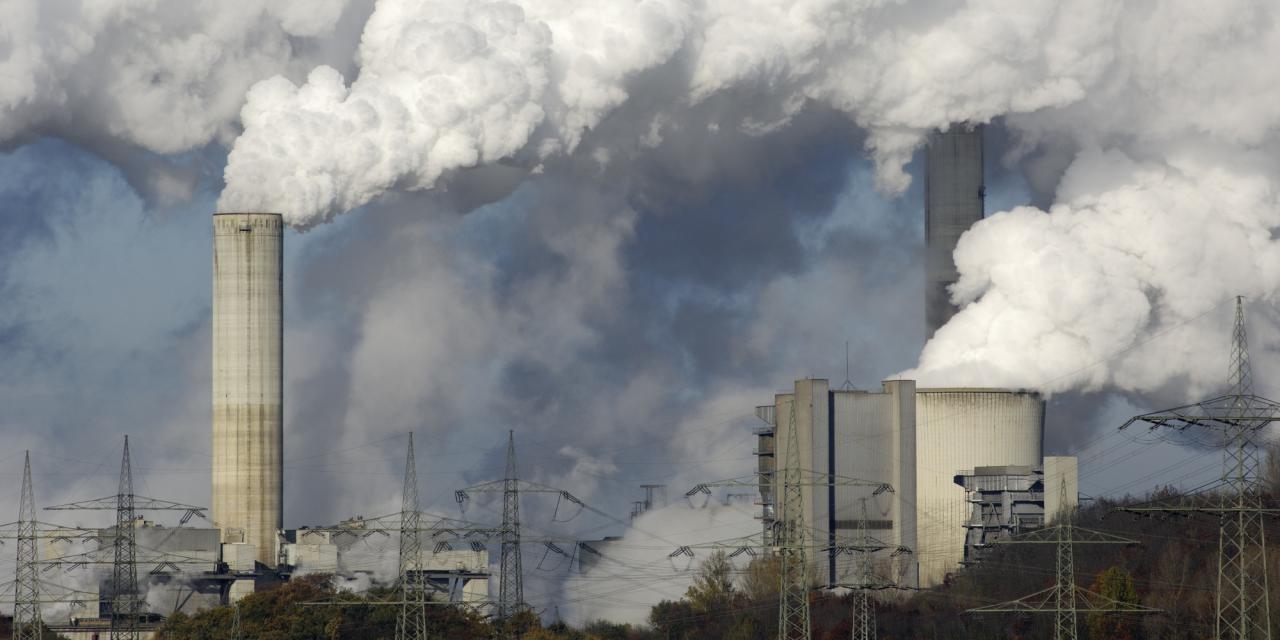
The Environmental Protection Agency (EPA) regulations on power plant emissions, while crucial for mitigating climate change, inevitably bring about economic and social repercussions. Understanding these impacts is vital for crafting effective policies that balance environmental protection with economic realities and social well-being. These impacts vary significantly across different stakeholders, from power plant owners to local communities and the wider economy.The economic and social impacts of emissions reduction strategies are complex and multifaceted, affecting various sectors and populations.
The transition to cleaner energy sources, though necessary, often entails significant upfront costs and potential disruptions to established industries. Furthermore, the distribution of these impacts across different regions and socioeconomic groups needs careful consideration.
Economic Impacts on the Power Plant Industry
Power plants face substantial costs associated with compliance. These costs can range from upgrading existing infrastructure to adopting new technologies, like carbon capture and storage (CCS). Investing in these technologies can be a significant financial burden, potentially leading to higher electricity prices. For example, the installation of CCS systems can add considerable expense to power plant operations.
Furthermore, the need for specialized personnel and training for new technologies adds to the compliance costs.
- Increased operational expenses are a direct consequence of implementing emission reduction technologies. This is evident in the need for specialized maintenance and operation personnel. The required expertise in handling new equipment and processes adds to the operational costs.
- Potential job losses in the fossil fuel sector are a concern. As power plants transition to cleaner energy sources, some jobs associated with the operation and maintenance of fossil fuel plants may be lost. However, the creation of new jobs in renewable energy and related sectors is also a possibility.
- Investment in renewable energy infrastructure creates new employment opportunities. This transition can lead to a shift in employment opportunities, potentially leading to job losses in the traditional fossil fuel sector but creating new job openings in the renewable energy industry.
Social Impacts on Communities and Industries
The transition to a low-carbon economy may disproportionately affect communities reliant on power plants for jobs and economic stability. The closure or significant restructuring of fossil fuel power plants can lead to job losses and economic hardship in those areas. For example, communities heavily reliant on coal-fired power plants might face economic distress as the industry shifts.
EPA’s efforts to curb climate power plant emissions are crucial, but global events like the recent Biden-brokered Israeli-Hamas cease-fire biden israel hamas cease fire highlight the broader challenges of balancing environmental concerns with geopolitical realities. Ultimately, sustainable solutions for both climate change and international relations need to be interconnected for lasting impact on our planet.
- Impacts on local economies. Communities that rely on the power plant industry for jobs and revenue may experience significant economic disruptions as power plants transition to cleaner energy sources. This transition may lead to a decline in local businesses and services.
- Public health benefits. Reduced emissions from power plants can lead to improved air quality and a reduction in respiratory illnesses, ultimately lowering healthcare costs for the population. The reduction in pollutants can lead to a decrease in respiratory illnesses, benefiting public health and potentially lowering healthcare costs.
Economic Incentives and Disincentives for Emission Reduction
Governments can incentivize power plants to reduce emissions through tax credits, subsidies, or grants for adopting cleaner technologies. Conversely, penalties or regulations can create disincentives for continuing to emit high levels of pollutants. The design of these incentives is critical for effective emission reduction.
- Government regulations can incentivize emission reductions. Governments can implement policies to promote the use of renewable energy sources or technologies for carbon capture and storage. This can be achieved through tax credits or subsidies for power plants adopting cleaner technologies.
- Market mechanisms can create incentives for emissions reductions. The creation of carbon markets or emissions trading schemes can incentivize power plants to reduce their emissions by providing economic incentives for lowering their carbon footprint.
Different Approaches to Economic Impacts
Different countries and regions have diverse approaches to addressing the economic impacts of emission reduction. Some prioritize direct financial support for affected communities and industries, while others focus on market-based mechanisms to incentivize emissions reductions. For example, some countries may offer specific financial assistance to communities impacted by the closure of coal-fired power plants, while others may focus on carbon pricing mechanisms to encourage a shift toward cleaner energy sources.
International Collaboration on Emission Reduction: Epa Climate Power Plant Emissions
Global power plant emissions significantly impact the climate, demanding international cooperation to mitigate their effects. Addressing this challenge requires a unified front, transcending national borders and fostering shared responsibility. International agreements and collaborative initiatives are crucial to establishing common standards and incentivizing emission reduction strategies across nations.International agreements and collaborations play a pivotal role in addressing the complex issue of power plant emissions.
These agreements provide a framework for nations to work together, sharing knowledge, technology, and resources to achieve emission reduction targets. By coordinating efforts, countries can pool their expertise and resources, fostering innovation and promoting the adoption of cleaner technologies.
International Agreements and Frameworks
International climate agreements, such as the United Nations Framework Convention on Climate Change (UNFCCC) and the Paris Agreement, provide the overarching framework for international collaboration on emission reduction. These agreements establish common goals and principles, outlining commitments for emissions reduction and adaptation. The Paris Agreement, for instance, aims to limit global warming to well below 2 degrees Celsius above pre-industrial levels.
The specific targets and commitments within these agreements vary, depending on a nation’s capacity and circumstances.
Examples of International Cooperation
Several examples demonstrate the importance of international cooperation in emission reduction strategies. The Clean Development Mechanism (CDM) under the UNFCCC allows developed countries to invest in emission reduction projects in developing countries, helping them achieve their emissions reduction goals while supporting sustainable development. Joint research and development initiatives on clean energy technologies, such as carbon capture and storage (CCS), are another key aspect of international cooperation.
EPA climate power plant emissions are a serious issue, impacting our planet’s future. It’s hard to process the enormity of the problem, especially when considering the potential for long-term consequences. Thinking about the heartbreaking stories of individuals and communities struggling with the fallout of these policies, like the poignant reflections on grief in the recent article “grief is for people sloane crosley” grief is for people sloane crosley , makes the urgency of finding solutions even more apparent.
Ultimately, addressing EPA climate power plant emissions is vital for a sustainable future.
These projects often involve collaboration among research institutions, government agencies, and private companies from various countries. Further, the sharing of best practices in implementing emission reduction policies, such as carbon pricing mechanisms or renewable energy incentives, is a crucial aspect of international cooperation.
Challenges in Fostering International Cooperation
Despite the significant potential benefits, fostering international cooperation on emission reduction faces numerous challenges. Differing national priorities, economic considerations, and political sensitivities can impede the development of effective agreements. Unequal economic development and varying capacities among nations can also create obstacles to achieving shared goals. The need for significant financial and technological support for developing countries is another important consideration.
Addressing these challenges requires careful negotiation, flexibility, and a shared commitment to addressing climate change.
Opportunities for Enhanced International Cooperation
Numerous opportunities exist for enhancing international cooperation on emission reduction. Strengthening international research collaborations can accelerate the development and deployment of innovative clean energy technologies. The sharing of best practices and policy insights across countries can provide valuable learning experiences and promote the adoption of effective emission reduction strategies. The development of international financial mechanisms to support developing countries in transitioning to cleaner energy sources can also play a vital role.
Approaches and Frameworks for International Climate Agreements
Various approaches and frameworks are employed in international climate agreements. These include legally binding agreements, such as the Paris Agreement, and voluntary commitments, such as those made by individual countries. Different approaches consider the diverse circumstances and priorities of nations. The framework recognizes the importance of common but differentiated responsibilities and respective capabilities (CBDR-RC), acknowledging that developed nations have a greater historical responsibility for greenhouse gas emissions and have a greater capacity to support developing nations in transitioning to cleaner energy sources.
Future Trends in Power Plant Emissions
The fight against climate change necessitates a proactive approach to reducing power plant emissions. Future trends are driven by a confluence of factors, including tightening regulations, technological advancements, and the growing demand for renewable energy sources. Understanding these evolving dynamics is crucial for policymakers and industry stakeholders alike to effectively navigate the transition towards a cleaner energy future.The future of power plant emissions is intertwined with ongoing advancements in technology and evolving policy landscapes.
Projections for emission levels depend heavily on the pace of innovation and the political will to enact and enforce stringent emission standards. A deeper dive into the specific trends provides a clearer picture of what the future may hold.
Potential Future Developments in Power Plant Emission Regulations
Future power plant emission regulations will likely become stricter, aiming to significantly reduce greenhouse gas emissions. This involves more stringent standards for existing plants and stricter limits for new facilities. Regulations are likely to incentivize the adoption of cleaner technologies, potentially through carbon pricing mechanisms or performance-based standards. Examples of such measures include the EU’s Emissions Trading System and the Clean Power Plan in the US.
Evolving Role of Carbon Capture and Storage (CCS)
CCS technology is evolving, but its widespread deployment still faces considerable challenges. These challenges include high costs, limited infrastructure, and public acceptance concerns. However, improvements in CCS efficiency and decreasing costs, coupled with stricter emission regulations, could potentially increase its role in mitigating emissions. Demonstration projects and pilot programs are crucial to refine CCS technologies and to address concerns about safety and environmental impact.
For instance, projects like the Sleipner project in Norway demonstrate the potential of CCS, though large-scale implementation remains a significant hurdle.
Impact of Advancements in Renewable Energy Technologies, Epa climate power plant emissions
Advancements in renewable energy technologies, particularly solar and wind power, are rapidly transforming the power sector. Their decreasing costs and increasing efficiency make them increasingly competitive with traditional fossil fuel-based power plants. The integration of renewable energy sources into the grid is crucial for reducing reliance on fossil fuels and lowering emissions. This trend is exemplified by the rising capacity of solar and wind farms worldwide.
Projections for Emission Levels Under Different Scenarios
Different scenarios for future power plant emissions hinge on various factors, including the pace of renewable energy deployment, the success of carbon capture technologies, and the stringency of environmental regulations. A scenario emphasizing aggressive renewable energy adoption and widespread CCS deployment could lead to significantly lower emissions compared to a scenario relying primarily on traditional fossil fuel-based power plants.
Government policies and international agreements play a crucial role in shaping these emission pathways.
Technological Advancements and Projected Impact on Emissions
| Technological Advancement | Projected Impact on Emissions |
|---|---|
| Advanced Combustion Technologies | Potentially reduce emissions by 10-20% in existing plants |
| Carbon Capture and Storage (CCS) | Significant emission reductions, but implementation challenges remain |
| Increased Renewable Energy Integration | Dramatically lower emissions, but requires grid modernization |
| Smart Grid Technologies | Improve energy efficiency and grid stability, contributing to emission reductions |
| Fuel Switching (e.g., natural gas to hydrogen) | Potential emission reductions depending on the hydrogen production method |
Public Awareness and Engagement
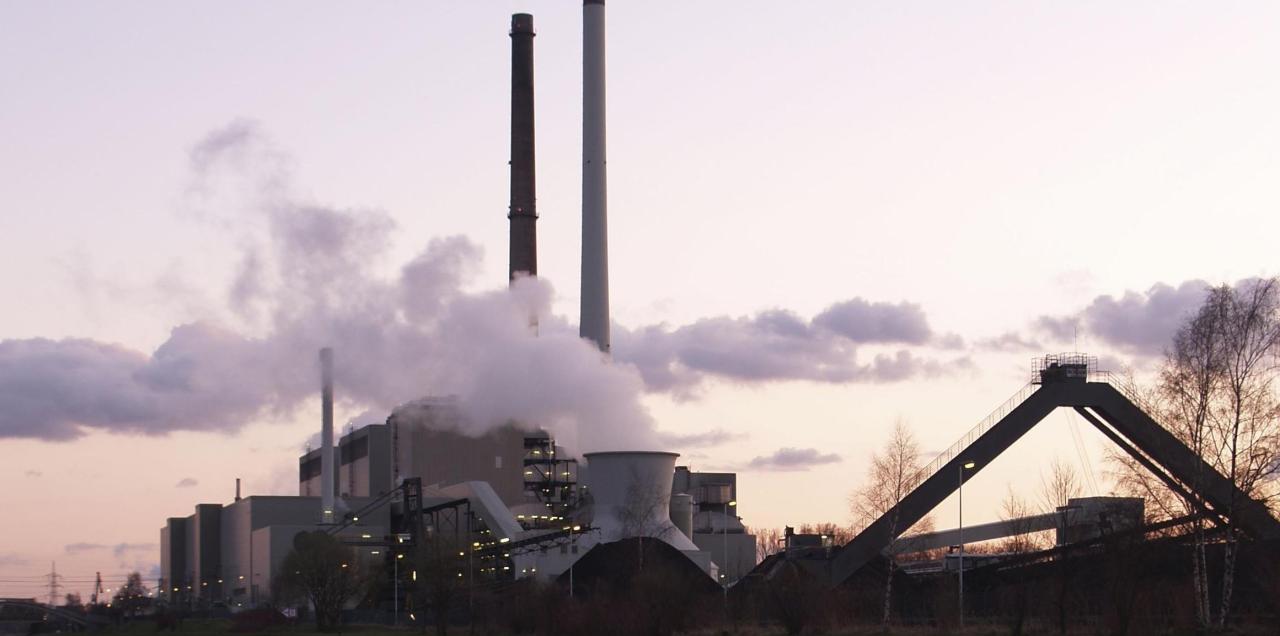
Public awareness plays a crucial role in driving the transition to cleaner energy. Informed citizens are more likely to support policies and initiatives aimed at reducing power plant emissions. Engaging the public through effective communication strategies can foster a shared understanding of the challenges and opportunities associated with climate change and emission reduction. This understanding is essential for building public support for necessary changes in energy infrastructure.Effective public awareness campaigns go beyond simply informing the public about the problem.
They must also empower individuals to take action and advocate for change. By fostering a sense of collective responsibility, these campaigns can galvanize support for policies that promote cleaner energy and sustainable practices.
Public Awareness Campaigns on Power Plant Emissions
Public awareness campaigns often utilize various media platforms to reach diverse audiences. These platforms include educational websites, social media campaigns, documentaries, and interactive exhibits. These campaigns aim to highlight the connection between power plant emissions, climate change, and its impact on communities.
Methods for Educating the Public about Climate Change and Emissions
Educational materials on climate change and power plant emissions can employ diverse approaches. These include interactive online tools, simplified explanations of complex scientific concepts, and the use of real-life examples to illustrate the impacts of emissions on local communities. Case studies of successful campaigns can serve as valuable models for future initiatives.
The Public’s Role in Advocating for Cleaner Energy Sources
Citizens can actively participate in advocating for cleaner energy sources. This can involve contacting elected officials, supporting environmental organizations, and engaging in community discussions about climate change. Direct action, such as participating in protests or supporting renewable energy initiatives, can also significantly impact policy decisions. Individual actions, such as adopting energy-efficient practices at home, can also contribute to a collective effort to reduce emissions.
Case Studies of Successful Public Awareness Campaigns on Environmental Issues
Numerous successful campaigns demonstrate the effectiveness of public engagement in environmental issues. The “Earth Hour” campaign, for instance, successfully raised awareness about energy conservation. Similarly, campaigns promoting recycling and reducing waste have demonstrated the impact of collective action. These successful campaigns often involve clear communication strategies, targeted outreach, and community engagement. The success of these campaigns highlights the potential for public participation in driving environmental change.
Involving the Public in Decision-Making Processes
Involving the public in decision-making processes is crucial for ensuring that emission reduction strategies reflect community needs and concerns. This can be achieved through public forums, town halls, and online platforms that facilitate feedback and dialogue. Public participation can help policymakers understand local perspectives and tailor policies to address specific regional challenges.
Final Review
In conclusion, tackling EPA climate power plant emissions requires a multifaceted approach, encompassing stringent regulations, innovative technologies, and international cooperation. The future of our planet hinges on the effective implementation of these strategies. Ultimately, mitigating these emissions is not just an environmental imperative, but also an economic and social necessity.
Expert Answers
What are the most common pollutants emitted from power plants?
Common pollutants include sulfur dioxide, nitrogen oxides, particulate matter, and greenhouse gases like carbon dioxide.
How do international agreements contribute to emission reduction?
International agreements, such as the Paris Agreement, establish frameworks for countries to cooperate on emission reduction targets and share best practices.
What are the potential economic benefits of reducing power plant emissions?
Reduced emissions can lead to improved public health, decreased healthcare costs, and the development of new green technologies, creating economic opportunities.
What role do renewable energy sources play in emission reduction?
Renewable energy sources, like solar and wind power, offer a clean alternative to fossil fuels, significantly reducing emissions from power plants.

